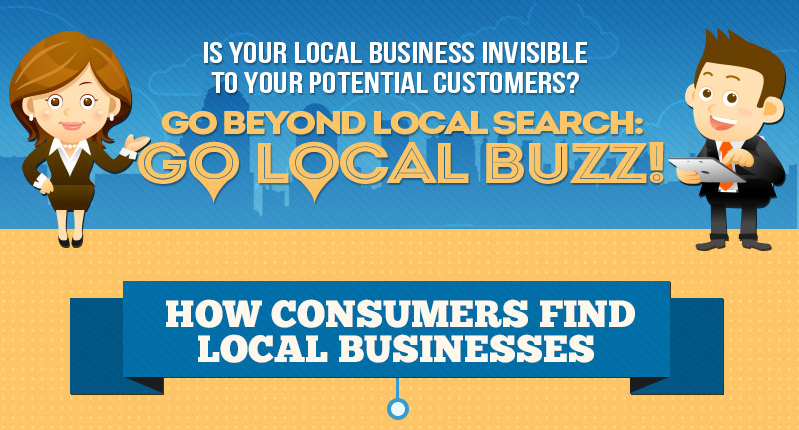Getting More Leads and Sales, Not Just Fancy Cosmetic Redesign
Implementing responsive web design means opening up your online storefront to mobile visitors, effectively increasing your chances of getting more leads and sales through your site. While it may come as a mere fancy redesign to some business owners, you should realize that this change is geared toward marketing more than cosmetics. Making the decision to have a responsive site means giving your business more opportunities to grow, especially for the long haul.
See our Infographic:

Responsive Design Defined
In a nutshell, a responsive web design adapts itself to multiple screen sizes using the same URL, the same page, the same content, and the same code. Having a responsive web design means your website responds to or adjusts automatically to the size of the screen of various devices: a desktop computer, a laptop, a tablet, or a smartphone.
Today is the perfect time to go responsive as mobile ownership is up, and will continue to rise in the future. In the U.S. alone, there are already over 120 million smartphones and 50 million tablets, estimates digital research firm comScore. By the end of this year, 2013, there will be 1.4 billion smartphones across the world, adds another research firm, ABI Research. It is also expected that by 2014, there will be more mobile Internet users than desktop users.
But it’s not just mobile device ownership you should look at; it’s what people do with their laptops, tablets, and smartphones that you should pay attention to.
Digital Media Consumption through Mobile
Owners are so engaged with their mobile devices that 37% of time spent on digital media is now driven by smartphones and tablets. Research shows that mobile (43%) is closing in on desktop (57%) as preference when reading news. User preference is the same when it comes to reading and sending emails. Mobile Internet usage is also expected to rise 66% in the next five years.
According to Adobe’s Digital Index, web page views via smartphones and tablets were at 7% in 2011 before jumping to 13.3% in 2012. Web page views via personal computers, meanwhile, are on the decline from 93% in 2011 to 86.7% in 2012. Simply put, more and more users are viewing web pages though mobile devices.
Mobile Users Go Social and Local
Using their mobile devices, owners do not just browse websites as they do with their desktop computers. They also engage in social networking and local search. Look at the following findings by comScore:
- 55% of users choose mobile devices over PC for social networking
- 53% of smartphone users and 61% of tablet users read posts from people known personally
- 39% of smartphone users and 47% of tablet users read posts or status updates from organizations, companies, brands, events, or products
- 37% of smartphone users and 46% of tablet users followed a link to a website posted by someone else
Increased mobile usage also led to the growth of local search to 144% in 2011. And as of December 2012, 27% of total web traffic came from mobile devices accessing directories and other local web resources. This is a major increase from only 6% the previous year.
Consequences of Your Non-Mobile Friendly Site
Sterling Research and SmithGeiger conducted a study for search giant Google on user mobile friendly sites and found that:
- 36% of respondents say a non-mobile-friendly site wastes users’ time
- 48% of users say a non-mobile-friendly site annoys and frustrates them
- 48% of respondents said a company whose website didn’t load properly on smartphones doesn’t care about their business
- 50% said they will use a site less if it is not mobile-friendly
- 52% of users are unlikely to engage with a company whose site brought a bad mobile experience
By not being mobile friendly – by not being responsive – your website is turning away mobile visitors. These visitors could have been business leads and sales.
Go Responsive, Reap the Benefits
By going for mobile responsive web design, you’ll enjoy the following benefits:
Great user experience – Your prospects have a better user experience because your website loads perfectly regardless of the device they are using. They no longer need to zoom in and out, and scroll left and right, all the time. They can view your site on more browsers.
No need to maintain multiple versions of websites – Instead of creating a separate mobile site (m.example.com), going responsive allows you to open and maintain just one. There’s less maintenance and expenses on your part.
No need to SEO for multiple websites – Getting a mobile site means doing double SEO work. Avoid that hassle by going responsive instead.
Efficient crawling and indexing of search engine robots – Responsive is Google’s recommended configuration for serving content to mobile devices. It’s easier for search engines to crawl and index your pages since they will be dealing with a single set of codes and content under one URL.
Higher chances of pages getting ranked – You can focus all your optimization efforts on one website, increasing your chances of better rankings. You also avoid redirect problems – common with building mobile version sites – so search engines can find and rank your site with ease.
Best Benefit: Get More Leads and Sales!
Responsive web design isn’t merely improving the appearance of your website on mobile devices; it’s about showing prospects that you care and that you are ready to cater to their needs, including the need to browse your site through mobile. It’s about increasing your leads and sales, as found by studies:
- 74% of users are more likely to return to a mobile-friendly site
- 67% of users are more likely to buy if the site is mobile friendly (Sterling Research and SmithGeiger for Google)
- 62% of companies reported an increase in sales after designing a site for mobile users (Econsultancy)
Do people actually buy through mobile devices? A comScore study shows that 11% of e-commerce spending is through m-commerce or mobile in Q4 2012 ($7.2 billion), up from only from 3% in Q4 2012 ($1.6 billion).
Get Free Consultation on Your Responsive Website
Before we even offer to create your mobile responsive website, we need to get to know your business and your target market. This helps us customize our approach, leading to better results. That’s why we’re offering a free in-depth consultation with you.
Send an email at info@qoolab.com or call 805-674-4797 now to see how you can schedule your free consultation on responsive web design today.



